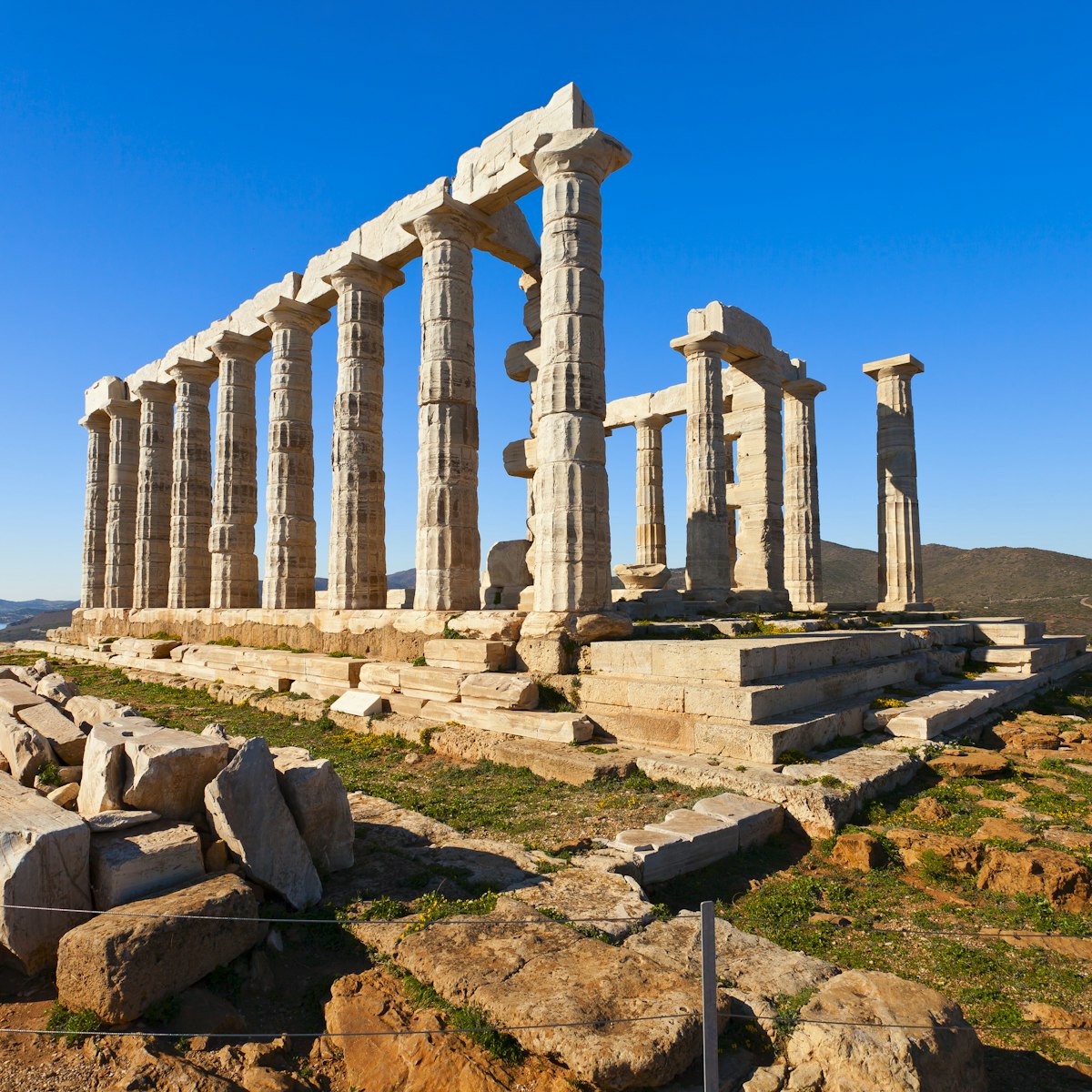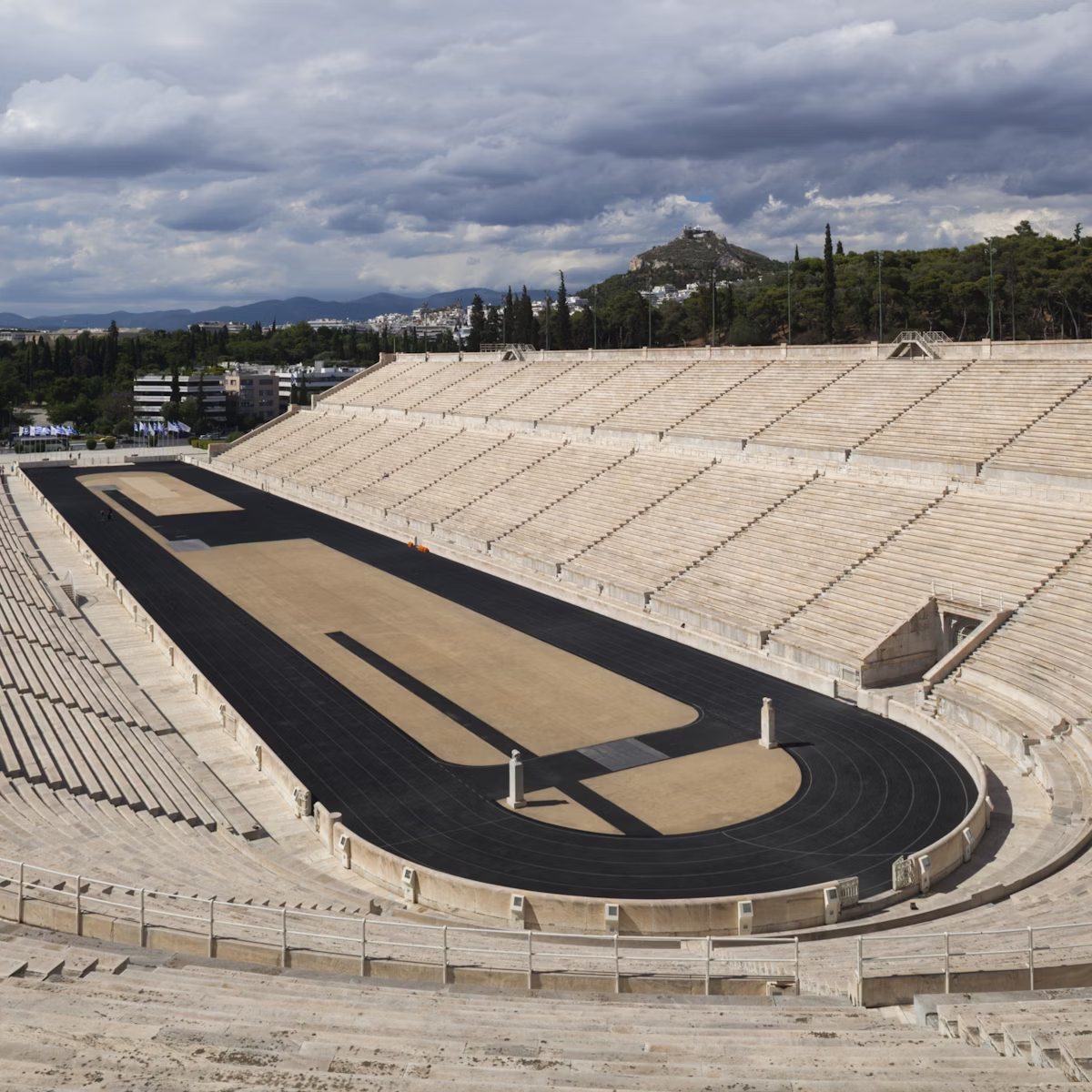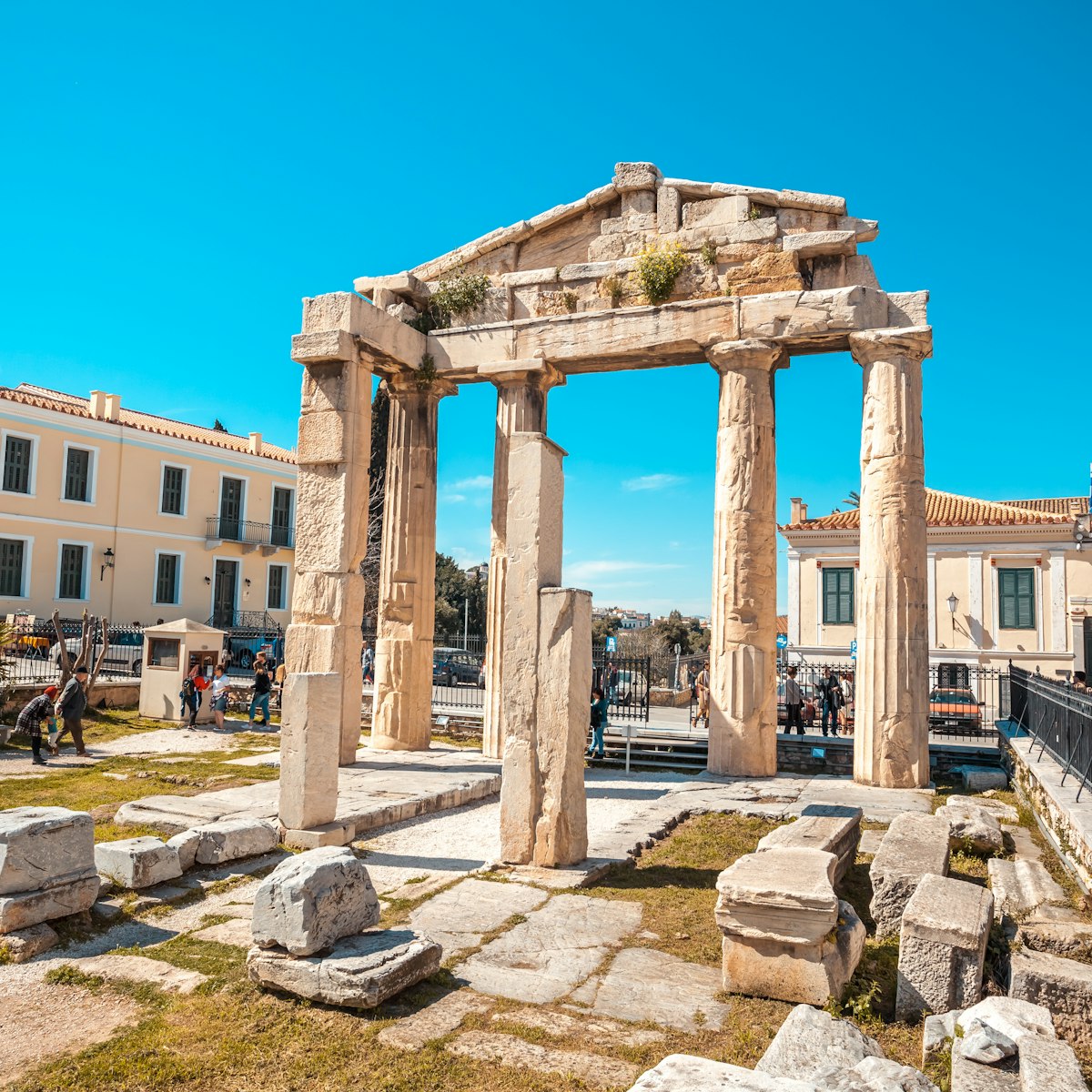This Pentelic marble tower within the Roman Agora, likely built in the 2nd century BC, is both beautiful and functional. Devised by Andronicus, a Macedonian (Greek) astronomer, it's an ancient time-and-weather station. Aligned with the four cardinal directions, each of its eight sides is a compass point, each illustrated with a figure representing the wind from that direction. Sundial markings are visible below the reliefs, and it was topped with a weather vane, probably a bronze figure of Triton.
Inside the tower you can see the original position of a water clock, which marked time with water from a stream that flowed down from the Acropolis. The stone roof, one of very few preserved from ancient times, is 24 stone panels. Conservators have revealed patches of fresco – it was once painted all blue inside. There are also traces of later uses: a faint Roman drawing of a ship, a patch of a Byzantine angel fresco from the time it was used as a church, and Arabic calligraphy and a mihrab (prayer niche) from the late Ottoman period, when Turkish dervishes used it as a tekke (a Sufi place of worship). Restoration of the site was completed in 2015.
Adjoining the tekke, across the road north of the tower, was a Sufi madrasah (Islamic school), built in the 18th century; in the 19th century, its student cells made it useful as a jail. Much of the building was demolished to excavate Roman ruins beneath. Only the front gate, overgrown with greenery, remains.








